- Home
- William Shatner
Up Till Now Page 10
Up Till Now Read online
Page 10
Several months after we’d finished shooting the segment New-land invited me to meet astronaut Edgar Mitchell, who had become known for conducting paranormal experiments from space, and was going to host the program. That was very exciting for me; obviously I had tremendous admiration for the astronauts. When we met he shook my hand firmly and looked me directly in the eyes and said, “Bill Shatner, I’ve admired you for a long time, Captain Kirk, it’s great to meet you. Boy, that is some amazing story about what happened to you in the desert.”
He thought it was true. I had made up this whole story, and he believed it. How could I tell an astronaut that he was being fooled? That this never happened? “It certainly was amazing,” I agreed.
The show never went beyond that special episode—but for more than three decades the tabloids have been telling and retelling the story of the day William Shatner’s life was saved by an alien.
I truly love making up reality. I did a movie entitled Free Enterprise in which I played myself, but a me whose dream it is to do a musical version of Julius Caesar in which I play all the parts—except Brutus, of course, but only because of the technical difficulty involved in stabbing myself in the back. Free Enterprise was a low-budget movie being made by young filmmakers, so we were asked to provide our own wardrobe. In an army-navy surplus store in Westwood I found a beautiful leather bomber jacket, a white scarf, and a World War II captain’s hat. I bought them for about fifty bucks and wore everything in a scene.
The producers entered the film in the Cannes Film Festival and invited me to come to France to assist in promotion. The producers had decided to donate my bomber jacket, scarf, and cap to the Hard Rock Café. They held a press conference there. Reporters asked me about the clothing and I told the truth as quickly as I could make it up. “I found this jacket,” I said. “It’s Eddie Rickenbacker’s jacket.” Eddie Rickenbacker was one of America’s first aces in World War I, winning the Congressional Medal of Honor for shooting down twenty-six enemy aircraft. “This was his original jacket,” I continued. “It was in a glass case in a museum, I believe, and it was stolen. I found it in a used-clothing store and I’ve treasured it ever since. His jacket, scarf, and this is his hat. I would like to donate it to . . .” The Hard Rock Café in Cannes, France, where it occupies a case of honor.
That’s the true story of how I made up a story. So, I’m onstage with Walter Matthau in A Shot in the Dark at the Booth Theatre and there is a scene in which I’m about to reveal the result of my investigation—the murderer is the gay butler, who had been carrying on a secret affair with the married chauffeur! As the audience knew, Julie Harris’s character, Josefa Lantenay, and I had literally cooked up a plan—we had baked the victim’s wedding ring into a bread pudding and at the climax of my brilliant explanation I was to exclaim, “The proof is in the pudding!” And we would produce the wedding ring.
This being a farce the plot couldn’t be that obvious. The actual murderer was Walter Matthau, who was in love with Julie Harris and believed she was having an affair with the chauffeur, who really was just using her to cover up his secret affair with the butler, so Matthau’s wife, who was in love with the chauffeur, would leave him alone, which is why Matthau had to kill the chauffeur. That’s farce. So in the middle of my dramatic discourse in which I explained precisely how I had maneuvered through the twisted turns of the labyrinthine murder plot to reach the inevitable conclusion that the butler did it—all the time being chided by Matthau who believed I was an incompetent idiot—just as I reached the moment at which I was to whirl around and point an accusing finger at the gay butler, unbeknownst to me the gay butler took a sip of poisoned wine and fell face forward into the pudding.
“And so,” I exclaimed, whirling around and pointing my finger at the butler now lying dead facedown in the bread pudding, “I can now reveal that...the poof is in the pudding!”
Matthau and I just locked eyes. The audience knew that I had blown my line and was waiting to see if either one of us would break up in laughter. But for farce to work it has to be played earnestly. If the characters are in on the joke, if we were to start laughing, the entire suspension of disbelief would disappear, ruining the show. It’s an unforgiving moment, the audience had paid their hard-earned dollars to see a farce, the last thing they wanted was laughter.
Walter and I understood that. We were both experienced stage actors. So we froze and we looked at each other. Someone in the audience had giggled at my faux pas. Then someone else tittered. We held it. Someone else laughed, and then another person laughed. Laughter is infectious and it was spreading. And Walter and I didn’t move; I barely breathed for fear I would start laughing. Gradually, the audience understood that we were trying desperately not to laugh, which of course is hysterical. The more obvious it became that we were fighting it, the funnier it was to the audience. The titters had become hysterics.
Because I had more water in my cells than Walter, I began to sweat. At first I glistened. I merely shone. But the audience could see the change from the flat pancake makeup to the glisten. Then as I strained to hold it, almost like holding your bowels, the sweat began to come down my face in rivulets.
The twenty-five hundred people in the audience and the actors on the stage were totally aware of what was happening. The challenge was not to laugh. Whatever Walter and I did, we could not laugh. The audience could laugh, Julie Harris turned away from the audience and was laughing, but we must not under any circumstances laugh.
The longer the laughter continued the louder it got. The audience was laughing at the sound of its own laughing. I was meditating on the sound of my own breathing. I was focusing on the sound of my breath going in and out of my lungs, breathing into the knowledge that I could not break up. I was drenched in perspiration, sweat was rolling down my brow and my cheeks. The laughter would begin to die down, and then it would catch hold again. Walter and I did not move. And finally, after at least five minutes, the audience got laugh fatigue, it literally got tired from laughing—and we were able to proceed with the play.
I need to pause here. I’ve just had a very interesting idea. One of the projects I’ve been working on for quite some time is called Gonzo Ballet. In February 2007, the Milwaukee Ballet created an original ballet set to the music from my CD, Has Been, although they named the ballet Common People. Gonzo Ballet is a documentary about the making of the ballet Common People. But getting it done has been a long, laborious process that had numerous and unexpected complications. So while there have been numerous documentaries made about the making of a movie or an album or, in this case, a ballet, I don’t believe anyone has done a documentary about the making of a documentary about the making of something. And why not?
Think about that while I go put on my makeup for the next chapter.
FOUR
Saluton, a amik, câpitr/o kvar. Ni babilu. Vi? Vi odoras kiel krokodilo. Which in Esperanto means either: Welcome, my friend, to chapter four. I would like to express my gratitude for your support for so many years. Or: Welcome, my friend, to chapter four. Let’s chat. You? You smell like a crocodile.
This is a true story. Even I could not make this one up: on a TV show called The Outer Limits I’d played an astronaut who returned from Venus having contracted a strange disease which made it impossible for me to get warm. The executive producer of that show was Leslie Stevens, a well-respected writer known primarily for his very strange imagination. Shortly after we’d done that show he called and told me he had a script he wanted me to read. It was called Incubus and it was very interesting. The story was compelling in its simplicity and starkness; it was an almost legendary tale of good confronting evil. It was going to be made with a small budget, but it was very powerful; it was so intriguing that after reading it I told him I would do it.
Unfortunately, there was one piece of information I did not have at that time. Perhaps it was my mistake, but the script was written in English so I just assumed the movie would be made in English. When I met wi
th Leslie Stevens he told me he had some very exciting news for me. “Guess what,” he said. “We’re going to do it in Esperanto!”
Rather than realizing that this idea was frenezla, crazy, I thought it sounded interesting. Perhaps I was frenezla. I had a vague awareness of Esperanto; the universal language invented in 1887 by Dr. Ludvic Lazarus Zamenhof, using the pseudonym Doktoro Esperanto. It was supposed to be a second language in which the various cultures of the world could come together and truly communicate with each other to reach worldwide peace. Supposedly, Leslie Stevens told me, “There are seven million people around the world who speak Esperanto, and there has never been a picture made in Esperanto.”
Never been a film made in this language? Seven million people speak it? Wow, it did seem like a very good idea. Seven million people would want to see it, that’s great box office. Of course, at that point it did not occur to me that of those seven million people who spoke this language, eight of them lived in Cleveland, five were in Cedar Rapids, and there was one guy in Syracuse. There was apparently a large contingent in Liberia but we couldn’t reach them because there were no telephones. So it would probably have been less expensive to make individual copies of this film and send them to the Esperanto speakers than show it in a theater. But nobody had thought about that; instead we were all very excited, we were making history!
Obviously no one in the cast actually spoke Esperanto. So we were taken to Esperanto camp, deep in California’s redwood forest. We camped outside and in the evening Leslie would lean against a giant redwood, smoke his pipe, and tell us about this movie. We had tutors in Latin and Greek who taught us the proper pronunciation of the words. I was given a script in which the Esperanto was written phonetically on one page and the English translation was on the facing page, so I would have some idea of the emotional context.
During the making of this film Leslie Stevens insisted that everyone, the crew as well as the cast, speak only Esperanto. And naturally that created some difficulties. For example, if Leslie said to a grip, “A la lumeina puse a sar,” put the light up there, the grip was like to reply, “Mi fluido ca˜car poop-poop,” thank you but my car doesn’t need carburetor fluid.
This was the only film shoot in history in which no one making the film actually spoke the language in which the film was being made. Leslie directed in Esperanto. Nobody understood anyone else, which accounted for the marvelously strange tone of the film; the somewhat desperate looks on the actors’ faces in the meaningful scenes which invoked Fellini or Bergman or Kurosawa, scenes in which the actors looked as if they were attempting to comprehend fate or understand the magnificent works of God—but it wasn’t that at all. We were simply trying to figure out what the hell Leslie Stevens was trying to tell us.
The cinematographer was Conrad Hall, who was nominated for eight Academy Awards and won for Butch Cassidy. Incubus, as he described it, was “A metaphysical witchcraft picture. Lots of mists and people with horns.”
Perhaps the one area in which we did not have any trouble was that no one forgot his lines; although that may have been due to the fact that no one knew their lines, no one understood their lines, and no one knew if anybody else was saying their lines correctly.
My co-star was a truly beautiful young woman named Allyson Ames, who played the role of Kia—the demon, not the car company. She was living with Leslie Stevens, which made my love scenes with her a bit awkward. During those scenes I was never quite certain if Stevens was urging me, “Show more passion, hold her tightly,” or warning me, “Keep your hands off her if you know what’s good for you.” But I will never forget the day Allyson stopped me as I was walking back to the set and said softly, “Bill, kie estas la necesejo.”
She was speaking our language. So I directed her to the PortO-Johns.
The story takes place in a wooded land known as Nomen Tuum. I played a good man who is confronted by a gorgeous succubus who seduces men and then kills them, thus claiming their souls for the devil. But when she truly falls in love with my character, all hell breaks loose. Actually, in this film, literally. That’s when they called in the horrible incubus.
Generally, when principal photography on a film is completed it takes a minimum of six months to a year for it to be edited into its final form. But Leslie Stevens decided to screen Incubus at the Venice Film Festival, hoping that would create a buzz about the film. In preparation for the festival Italian subtitles were added. When the film was finished I was invited to a screening. More than six months had passed since we’d shot the film, during which I’d done numerous projects, so I’d forgotten every word I’d learned in Esperanto, and I understood no Italian. So I sat there watching this film in which I’d starred, having not the slightest idea what it was about. I didn’t understand one word of the dialogue and I couldn’t read the Italian subtitles.
Only one other time in my career was I involved in a situation even remotely similar. In the animated film Over the Hedge I played Ozzie the Opossum, whose primary survival technique is playing dead, but truly dramatically playing dead. Shatnerian playing dead. Jeffrey Katzenberg, the head of DreamWorks, sent the cast, including Bruce Willis and myself, to the Cannes Film Festival for the premiere of the film. As we were walking up the red carpet, surrounded by photographers, we were introduced to the French actors who had played our characters in the French version. Wait a second, I wondered, we’re the stars of this film, right? I knew we were stars, our names were in big letters on the lobby cards and in the credits. But as this is an animated film our faces weren’t on the screen, and now our voices were being replaced by French actors. So we were the stars of a film in which we didn’t even appear. What were we doing there?
Incubus finally premiered at the San Francisco Film Festival. It received a lot of attention and very little distribution. There is a famous French director and film critic, Henri Chapier, who loved this film and arranged for it to be shown in Paris. The French were quite enthusiastic about it, apparently because they didn’t understand a word of it. As it was explained to me, true French film connoisseurs find great meaning in those things they don’t understand.
This was certainly the most unusual film in which I’ve ever been involved. After its release a terrible mistake made in a lab destroyed the negative and all of the prints. Many years later one print was found in the permanent collection of Cinémathèque Française in Paris and digitally remastered for video. I’m very pleased to be able to announce that the DVD is currently available at the online store at WilliamShatner.com for the remarkable price of only $9.95 plus shipping—that’s two dollars less than Amazon! And not only that, my friends, if you act now, and you spend more than fifty dollars (not including shipping) it would be my pleasure to include a free—that’s right, absolutely free—”Trelane: The Squire of Gothos” nine-inch action figure while supplies last.
When they were preparing the DVD they asked me to provide a narrative about the making of the film. Doing so brought back many memories, including a few words of this language, which unfortunately after the original release of the film seems to have lost its cachet. But as I finished the voice-over and looked at the film, I do remember wondering, as we used to say, ewhat ethe ehell eare ewe edoing ein ethis emeshugana efilm/o?
When I made this film I had been working regularly for almost fif-teen years and still didn’t have more than eighteen hundred bucks in the bank. I did have three—count ‘em—absolutely beautiful daughters, a small house in Los Angeles, and a marriage that was not going very well. It was terribly frustrating, several of the young actors with whom I’d started in television were becoming major movie stars, fine actors like Paul Newman and Steve McQueen, while I was still doing one-shots on TV series and making primarily low-budget movies.
For a time I may have been the hardest-working actor on television. For example, on The Outlaws I played a man on the run for a murder I had not committed. In Robert Herridge Theatre I was a gunfighter hired to kill the honest sheriff in a one-hor
se town. I did several Thrillers; in one I became obsessed with the reflection of a woman in a mirror found in an old house, which caused me to accidentally kill my wife. In another one I was a desperate man trying to kill my rich aunt and her husband to inherit their fortune. On Alfred Hitchcock Presents I pushed my wife off a cliff instead of my mother-in-law. In “The Defenders” on Studio One, I accidentally killed a man in a street fight. On Arrest and Trial I was an ambitious TV executive planning to kill my way to the top. In The Virginian I was a gold miner driven by greed into trying to kill my rivals and in The Fugitive I was a psychotic killer.
When I wasn’t killing people I was saving them. On Alcoa Theatre I was a doctor with serious emotional problems, on The Nurses I was a doctor who had to deal with euthanasia, on Ben Casey I was an unconventional children’s doctor, and on Dr. Kildare I was, finally, a patient.
If I wasn’t killing them or saving them I was catching them or defending them on The Defenders and Checkmate and Burke’s Law and For the People. I never stopped working; if it’s Tuesday it must be Naked City. And I treated each of those parts as if they were equally significant; my work ethic is such that I never made a distinction between an important job and an unimportant job. And one show almost always led to something else.
And the reality is that if you throw enough programming against the wall, some of it is going to get framed and be called art. Certainly one of the most memorable programs I did during that time was a Twilight Zone episode entitled “Nightmare at 20,000 Feet.” Memorable now in television history, but truthfully I probably wouldn’t have remembered too much about it a month and three or four other shows later. The story concerned a... Here, let Twilight Zone creator Rod Serling describe it: “Portrait of a frightened man. Mr. Robert Wilson, thirty-seven, husband, father, and salesman on sick leave. Mr. Wilson has just been released from a sanitarium where he spent the last six months recovering from a nervous break-down...Tonight, he’s traveling all the way to his appointed destination which, contrary to Mr. Wilson’s plan, happens to be in the darkest corner of the Twilight Zone.”

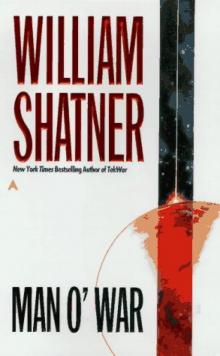 Man O' War
Man O' War Shatner Rules
Shatner Rules Leonard
Leonard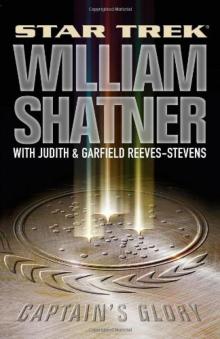 Captain's Glory
Captain's Glory Captain's Glory зпвш-9
Captain's Glory зпвш-9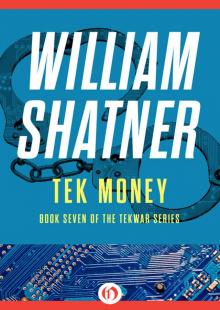 Tek Money
Tek Money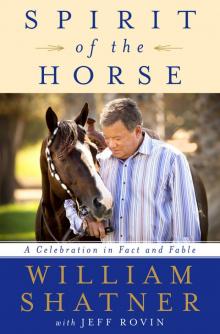 Spirit of the Horse
Spirit of the Horse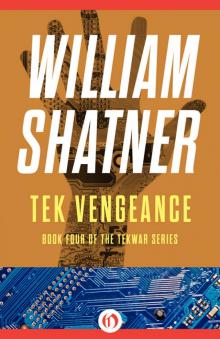 Tek Vengeance
Tek Vengeance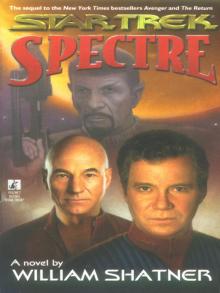 Spectre
Spectre Zero-G
Zero-G Tek Kill
Tek Kill Collision Course
Collision Course TekLab
TekLab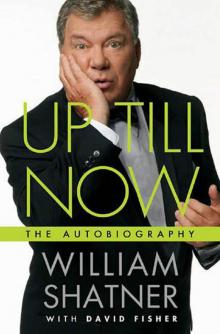 Up Till Now
Up Till Now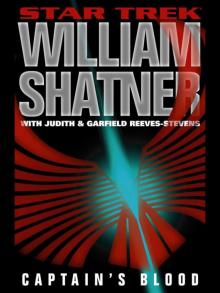 Captain's Blood
Captain's Blood TekWar
TekWar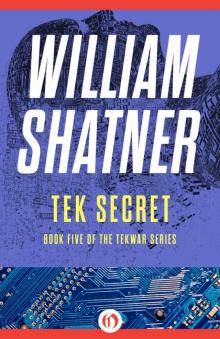 Tek Secret
Tek Secret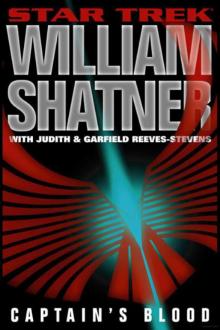 Captain's Blood зпвш-8
Captain's Blood зпвш-8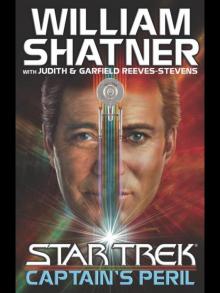 Captain's Peril
Captain's Peril Live Long and . . .
Live Long and . . .